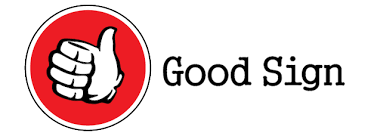None of us want to give the impression of a stereotype arrogant tourist when visiting a new nation. Spend a few minutes learning about the dos and don’ts of the welcoming nation’s culture and traditions, then take pleasure in the relationships that result!
Table of Contents
Making a Hand Motion and Calling

In many Western nations, waving our hands from side to side is a typical greeting or farewell gesture. In India, it means come hither, however, in many East Asian nations, it is regarded as too flashy and rude. Additionally, it could mean no need in some Latin American or Japanese countries.
In Laos and several Arab nations, a gesture that we would often interpret as get away signifies please come here.
In Russia and the US, curling the index finger or four fingers would be regarded as come over, but it might be misinterpreted in Europe. The same gesture is solely used to summon dogs in the Philippines and other parts of East Asia; therefore, using it with people is disrespectful.
In Greece and Turkey, the stop sign in the US should not be used since it would indicate go to hell.
A signal to stop.

A thumbs-up is not always the proper technique to request a ride when hitchhiking. Similar to the middle finger in the US, the phrase thumbs up has come to signify a harsh insult in Middle Eastern nations.
The symbol can be similarly provocative in Greece, Sardinia, and West Africa. Use only a free, flat hand with fingers pointing upward. The same is applicable in Morocco and China.
Gestures for Counting and Numbers

A forefinger raised in Germany and Austria indicates two as opposed to one. In Japan, a thumbs up correspond to five. The index finger is used to signify one in Russian. The thumb symbolizes the number one in East Slavic nations. It may be rather humorous.
For example, if someone asks you whether you’d like $20 in two notes and you give them the thumbs up, they’ll probably hand you a pile of $1 coins in Bulgaria. When placing a meal or beverage order, remember this.
In the US, making the a-ok sign with your thumb and index finger would be equivalent to saying zero in France and Russia. Additionally, it is highly impolite in Greece (apparently, we should be cautious with finger movements there!).
Do you nod, shake your head, or sway side to side?

Saying yes in the Philippines while leaning back your head denotes no. Shaking your head in Turkish signifies say again. The fact that in many nations, nodding up and down means no while waving the head side to side denotes yes is what most perplexes Americans and Russians.
Directly rejecting someone in India is typically avoided… So now we have the well-known Indian head wobble. Instead of a direct response, you receive a vague head nod that could mean yes, no, or not sure.
The wobble often means Ok, understood, which would signify if you asked if this was the proper area to wait for the bus or if you said, We meet at 7.
It would be ideal to watch instead to catch the nuances and context. If you encounter a familiar face from a distance, you can use it to acknowledge them instead of saying thank you, which is not commonly told in India. A lengthy head movement that is animated and eager signals yet.
Good sign

Yes means a quick, rapid side-to-side wobble. Vague, slower, and delicate would be a courteous way of saying no, but it would also signify not sure or maybe, but I’m not ready to commit.
If you don’t understand the context, the tongue click in the Balkans, Turkey, or Croatia might be annoying, especially if you’re Russian.
A tongue click in Russian denotes patronizing disdain. It just means no and is not offensive in the Balkans. A head-tossed-back gesture can be used to indicate no, we don’t have it, or it’s not here.
Directions and Pointing

Nearly everywhere, pointing with your index finger directly at someone is rude. It is only appropriate for inanimate items in Russia, Europe, and many African nations. It is incredibly impolite in China, Japan, Latin America, and Indonesia.